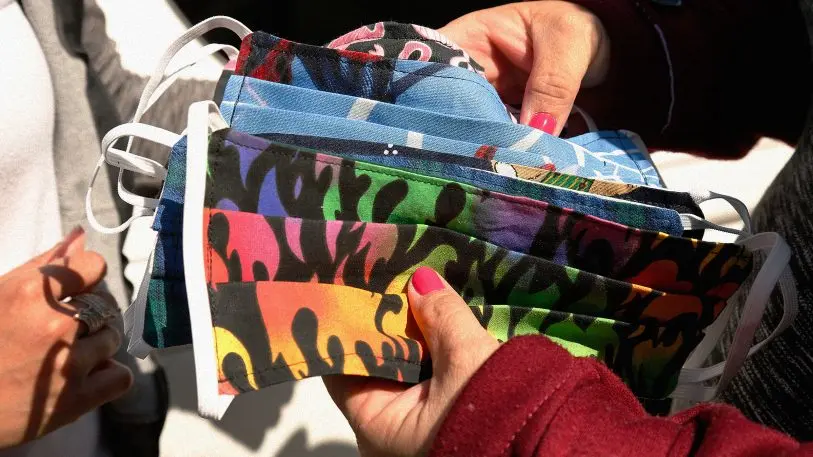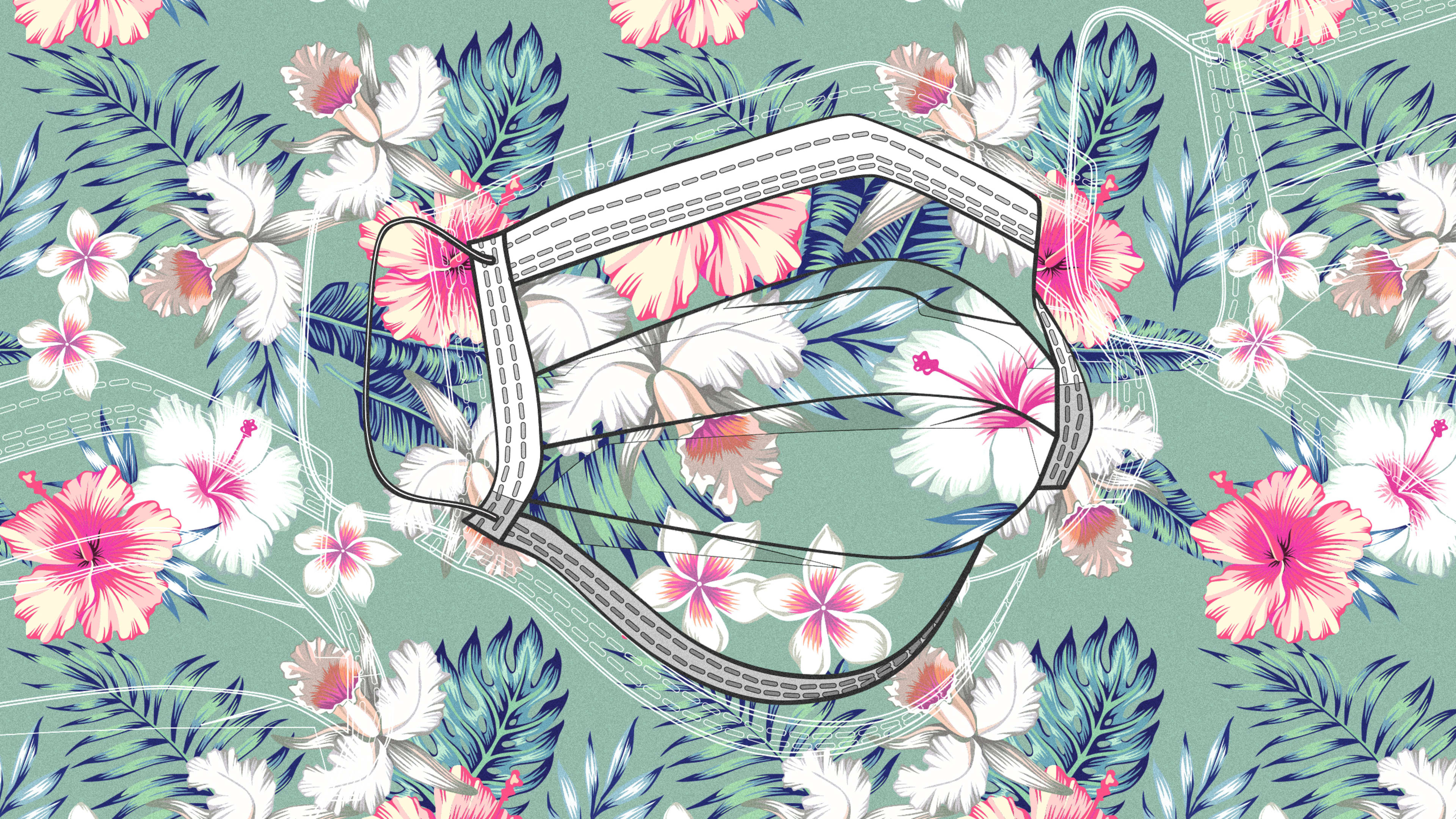My husband has been making weekly grocery runs to buy food for our family. Until now, the only precaution he has taken has been to bring plenty of disinfectant wipes and hand sanitizer to clean the shopping cart and his hands. But as the number of confirmed coronavirus cases goes up in Boston, where we live, we wonder whether it’s time for him to make his own mask and wear it the next time he ventures out.
We’re not alone. Since mid-March, the number of Google searches for DIY masks has gone up by 85%. As hospitals struggle to find enough surgical and N95 masks for their healthcare workers, it’s clear that any medically certified masks on the market should go to those frontline workers. Other masks on the market should go to people working in essential businesses, including bus drivers, warehouse workers, and grocery staff. For the rest of us, who are at significantly lower risk, a homemade mask might be our best option—especially since the Centers for Disease Control and Prevention is expected to reverse its previous stance and officially recommend that people cover their faces in public. This shift may come, in part, because of new evidence suggesting that the coronavirus might spread through the air and that people with no symptoms may carry the virus, possibly infecting others.

But what’s the best DIY mask? Over the past two weeks, the internet has been flooded with different designs, and not all of them are created equal; some may be more effective than others. It’s important to remember that no homemade mask can guarantee that you won’t become infected with the coronavirus, but studies have found that any facial protection can reduce your exposure to viruses compared with nothing at all. We’ve scoured the web to select the best possible designs for you to try out. But before we present the options, let’s go over the basics of mask design.
Protecting yourself versus protecting others
The pattern you choose will depend on your reason for wearing a mask. There are two reasons that you might wear a mask: to protect others, and to protect yourself. (Even medical masks can be divided into these two categories.) Surgical masks, which have a loose fit, are designed to prevent droplets from leaving a medical worker’s mouth and landing on the patient; N95 masks, which hug the mouth and nose and filter up to 95% of very small (0.3 micron) particles, are designed to prevent droplets from entering the doctor’s mouth.
There are many people to whom that first reason applies—people who want to be good citizens and prevent the spread of the virus to more vulnerable people. If everyone wore a mask when they went out in public, they could theoretically reduce the spread of the disease. So if your primary concern is protecting others, a simple mask design will do. A 2013 study of the flu virus found that even a homemade mask made from a cotton T-shirt reduced the number of microorganisms expelled from the wearer’s mouth, although it was three times less effective than a surgical mask. Your goal would be to create a mask out of fabric that catches droplets coming out of your nose and mouth. If you talk or sneeze, the fabric will prevent the fluid from landing on the floor or another person. You would then wash that mask after every use to make sure that bacteria doesn’t grow on the material.
If your main concern is getting infected with the disease—perhaps you’re in a high-risk category or you work in a warehouse surrounded by other people— you would want a mask that filters particles from the air. We’ve included two patterns that require HEPA (high-efficiency particulate absorbing) filters, which are certified to remove at least 99.9% of airborne particles. Cleverly, these designs use HEPA-certified vacuum cleaner filters. One of them even creates a seal around your face so that particles can’t enter from the sides.
Without further ado, here are some options based on the purpose of the mask and how complex it is to make.
A no-sew cotton mask
If you don’t have sewing skills and don’t have many crafting supplies at home, you can make a simple mask out of a T-shirt. Be sure to wash the T-shirt using your hot water setting first, then wash the mask after every wear.
A simple synthetic mask
The downside of using cotton is that it absorbs moisture. This makes it good for catching fluids from the mouth, but it can also allow bacteria to grow if you don’t wash it frequently. This pattern, which Popular Science adapted from MakerMask by Helpful Engineering, calls for a reusable grocery bag made from nonwoven polypropylene—a similar material to what is used in a surgical mask. The good news is you probably have a bag made from this material in your closet.
Mask with HEPA filter pocket
If your goal is to prevent yourself from breathing in airborne droplets, you should use a material that filters out particles. Most vacuum cleaner bags, for instance, contain HEPA filters. If you don’t have these at home, you can easily buy them online. This pattern, endorsed by the Great Falls Clinic, a healthcare center in Montana, involves a cotton mask with space for a HEPA filter that you would replace with each use. This design is slightly more complex, requiring a sewing machine. It has several folds to cover your face, but it does not create a perfect seal. You would cut a vacuum cleaner bag into a rectangular shape to insert into the mask before wearing, then remove the filter and wash the cotton portion after every wear.
Vacuum cleaner mask
This mask pattern, designed by Instructables, is slightly more complex than the ones above, also requiring a sewing machine. But it is designed to provide a tight seal, and it has a HEPA filter. Since it cannot be washed, it is designed to be worn only once. It’s a lot of work for a single-use product, so if you’re making this, you might as well make several at one time.
Recognize your brand’s excellence by applying to this year’s Brands That Matter Awards before the early-rate deadline, May 3.
